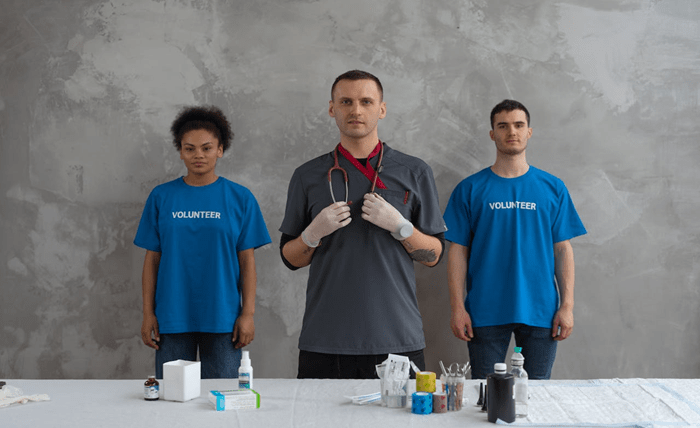Table of Contents
Creating a healthy community is akin to nurturing a garden; it requires patience, dedication, and a multifaceted approach to ensure that every individual can thrive. A healthy community transcends the absence of illness, encompassing physical, mental, and social well-being. Here, we explore strategies that can guide us toward fostering a vibrant and healthy community.
1. Promote Physical Activity
Promoting physical activity within a community isn’t just about providing the facilities but also about creating a culture that values and encourages movement in daily life. Initiatives like ‘Walk to School’ days, community-wide fitness challenges, and offering discounts for local fitness club memberships can incentivize physical activity. Cities can also implement bike-sharing programs and design streets that prioritize pedestrian and cyclist safety, making active transportation an appealing option for all residents. By integrating physical activity into the fabric of community life, we foster environments where staying active isn’t just easy—it’s the preferred choice.
2. Access to Nutritious Food
Beyond simply offering access to nutritious food, communities can take active steps to educate their residents about nutrition and healthy eating habits. Nutrition workshops in schools, cooking classes focused on healthy and affordable meals, and community health fairs are great ways to spread knowledge and inspire healthier food choices. Policies that support urban agriculture, like community gardens and urban farms, not only improve access to fresh produce but also strengthen community bonds and provide educational opportunities about where food comes from and how it’s grown.
3. Support Public Health Education
Supporting public health education through initiatives like scholarships for an online masters in public health program, like the one offered by William Paterson University, can develop leaders equipped to tackle modern health challenges. Public health campaigns and school-based programs that educate on topics ranging from nutrition to disease prevention can empower individuals with the knowledge to make healthier choices for themselves and their families.
4. Mental Health Resources
Enhancing mental health resources means ensuring that these services are not just available but also accessible and welcoming to all community members. This might involve offering services in multiple languages, providing childcare during therapy sessions, or ensuring mental health care is affordable through sliding scale fees or insurance coverage. Communities can also promote mental wellness through public art projects, community mindfulness sessions, and creating green spaces designed for relaxation and reflection. By normalizing the conversation around mental health and making resources accessible, communities can break down the barriers to seeking help.
5. Healthcare Accessibility
Improving healthcare accessibility requires innovative solutions to overcome geographic, economic, and informational barriers. Mobile health clinics bring essential services directly to underserved areas, telehealth appointments can make care accessible from home, and community health advocates can help navigate the often-complex healthcare system. Ensuring that healthcare professionals within the community are reflective of its diverse population can also improve trust and communication between caregivers and those they serve. By addressing these barriers head-on, communities can create a more inclusive healthcare ecosystem where everyone has the opportunity to receive the care they need.
6. Education and Awareness
Creating a culture of health within a community begins with education and awareness. Schools can incorporate health and wellness education into their curricula, teaching children the importance of nutrition, physical activity, and mental wellness from an early age. Workplaces can offer health and wellness programs, including seminars on stress management, nutrition counseling, and fitness classes. Local media can feature health-focused content, highlighting local health resources and sharing stories of individual and community health achievements. By embedding health education into various aspects of community life, we lay the groundwork for a healthier, more informed population that’s empowered to make choices that benefit their well-being.
7. Foster Social Connections
Initiatives that foster social connections are vital for mental health and overall well-being. Community gardens, local sports leagues, and cultural festivals not only offer opportunities for residents to engage with one another but also celebrate the diverse tapestry of the community. Implementing mentorship programs and neighborhood welcome committees can further enhance these bonds, creating a supportive environment where individuals feel valued and connected.
8. Environmental Health
A healthy environment is foundational to public health. Communities can initiate recycling programs, green building initiatives, and pollution reduction efforts to protect natural resources. Urban planning that prioritizes green spaces, like parks and community gardens, not only provides areas for recreation and relaxation but also plays a critical role in improving air quality and supporting local ecosystems.
9. Innovative Health Solutions
Adopting innovative health solutions can revolutionize access to and the quality of healthcare services. Telehealth services can overcome geographical barriers to care, while health apps can provide personalized advice and track wellness metrics, making health management more accessible. Community health challenges and wellness apps can motivate residents to adopt healthier lifestyles through a bit of friendly competition.
10. Policy and Advocacy
Advocating for health-promoting policies involves community efforts to lobby for changes that enhance public well-being. This can include campaigns for cleaner air standards, safer pedestrian zones, or increased funding for mental health services. Through collective action, communities can influence policy changes that have long-term health benefits.
11. Collaborative Partnerships
Collaborative partnerships extend the reach and effectiveness of health initiatives. Joint health fairs by local businesses, schools, and healthcare providers can offer screenings and wellness activities. Partnerships with local farms can increase access to fresh produce, while collaborations with tech companies can develop innovative solutions to health challenges.
12. Continuous Evaluation
Continuous evaluation through surveys, health data analysis, and community feedback sessions ensures that health initiatives are meeting their goals and can be adjusted as needed. This ongoing assessment helps to identify successful strategies worth expanding and areas where new approaches may be needed, ensuring that efforts are effectively contributing to a healthier community.
Conclusion
Creating a healthy community is a dynamic and ongoing process that demands collective action and commitment. By implementing these strategies, we can work towards a future where every community member has the opportunity to live a healthy and fulfilling life.

